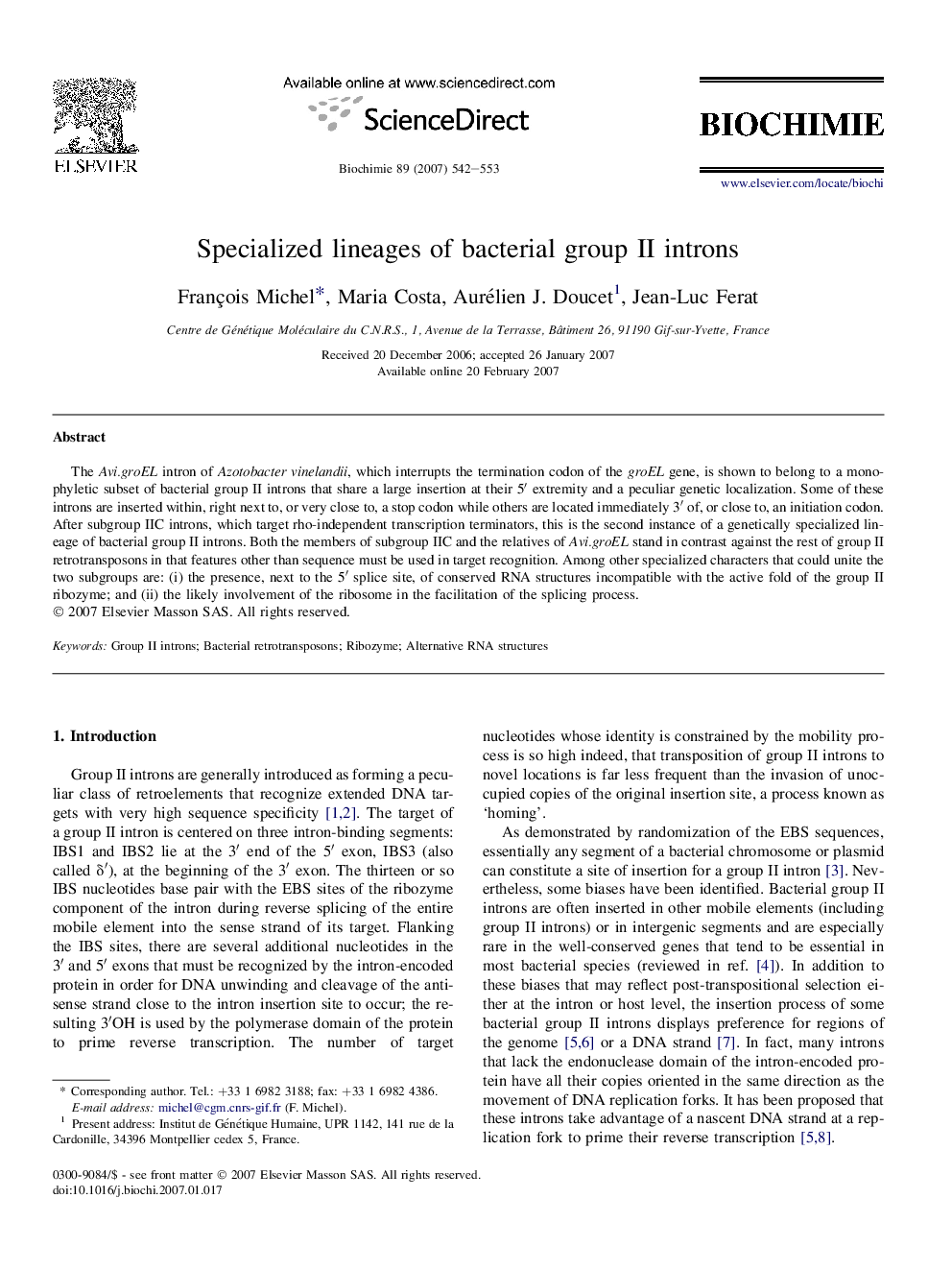| Article ID | Journal | Published Year | Pages | File Type |
|---|---|---|---|---|
| 1953426 | Biochimie | 2007 | 12 Pages |
Abstract
The Avi.groEL intron of Azotobacter vinelandii, which interrupts the termination codon of the groEL gene, is shown to belong to a monophyletic subset of bacterial group II introns that share a large insertion at their 5â² extremity and a peculiar genetic localization. Some of these introns are inserted within, right next to, or very close to, a stop codon while others are located immediately 3â² of, or close to, an initiation codon. After subgroup IIC introns, which target rho-independent transcription terminators, this is the second instance of a genetically specialized lineage of bacterial group II introns. Both the members of subgroup IIC and the relatives of Avi.groEL stand in contrast against the rest of group II retrotransposons in that features other than sequence must be used in target recognition. Among other specialized characters that could unite the two subgroups are: (i) the presence, next to the 5â² splice site, of conserved RNA structures incompatible with the active fold of the group II ribozyme; and (ii) the likely involvement of the ribosome in the facilitation of the splicing process.
Keywords
Related Topics
Life Sciences
Biochemistry, Genetics and Molecular Biology
Biochemistry
Authors
François Michel, Maria Costa, Aurélien J. Doucet, Jean-Luc Ferat,
